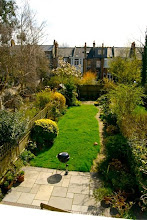
This week's bibliotherapy has particular resonance for me -- both because of its close relationship with my novel about Daphne du Maurier, and because of the last few months in my own life.
I'll be talking about 'The Breaking Point' at the Du Maurier festival in Fowey on May 10th. I hope to meet some of you there -- in person, or on this blog...
“There comes a moment in the life of every individual when reality must be faced,” wrote Daphne du Maurier in a prefacing note to her collection of short stories, ‘The Breaking Point’. “When this happens, it is as though a link between emotion and reason is stretched to the limit of endurance, and sometimes snaps.” The eight stories that followed are a clue to Du Maurier’s own breaking point, when she felt herself to be close to madness after her husband’s mental breakdown in July 1957, and her discovery of his affair. All are as disturbingly potent as her more famous short stories (‘Don’t Look Now’, ‘The Birds’), but perhaps the most intriguing is ‘The Blue Lenses’, set in a private nursing home like the one that admitted her husband, Boy Browning, when his collapse was kept secret from all but a handful of friends and family.
The patient in ‘The Blue Lenses’ is a woman, Marda West, recovering in ‘the anonymity of darkness’ after an operation on her eyes. As the bandages are removed, she sees everything – or rather, everyone – entirely differently. Her apparently loving husband now has a vulture’s head, threatening her with his ‘brooding eye, the blood-tipped beak, the flabby folds of flesh’; and the gentle-voiced nurse who has cared for her is a sinister snake, her ‘pointed barbed tongue swiftly thrusting and swiftly withdrawn’.
The medical staff are reassuring -- the operation had simply touched on a nerve (a reminder, perhaps, that the discreet label for Browning’s breakdown was ‘nervous exhaustion’), the surgeon makes an adjustment, and then explains, ‘the pressure threw out your balance’. But although the faces around her become human again, the story has a sinister ending: ‘Marda West took up the mirror and looked into it… The eyes that stared back at her were doe’s eyes, wary before sacrifice, and the timid deer’s head was meek, already bowed.’
‘The Blue Lenses’, and the rest of ‘The Breaking Point’, reflects a preoccupation with truth and deception, betrayal and divided loyalties, and the blurring of madness and sanity. Such is Du Maurier’s extraordinary skill as a writer that readers will follow as she teeters on the edge of the darkest abyss; but then she recovers her balance, and ours, again, and finds a way back from the brink.












